BrainSwarming makes gamification easy!
Divide your group into teams of 3 or 4 each and give each team Post-It notes of a different color. After the BrainSwarming graph is built, then count up the points in the following way.
1) 1 point for each Post-It note on the graph
2) 3 points for each solution path that a Post-It note is on. A solution path connects the goal to the resources. It is a way of indicating how to use the resources to achieve the goal.
The team with the most points wins.
Let's look at an example.
Suppose your teams are trying to save everyone on the Titanic. They have to keep people out of the icy water until help arrives in four hours.
The manager starts with the following graph. The goal, "save Titanic passengers," is at the top. One known resource, "lifeboats," is placed at the bottom.
Divide your group into teams of 3 or 4 each and give each team Post-It notes of a different color. After the BrainSwarming graph is built, then count up the points in the following way.
1) 1 point for each Post-It note on the graph
2) 3 points for each solution path that a Post-It note is on. A solution path connects the goal to the resources. It is a way of indicating how to use the resources to achieve the goal.
The team with the most points wins.
Let's look at an example.
Suppose your teams are trying to save everyone on the Titanic. They have to keep people out of the icy water until help arrives in four hours.
The manager starts with the following graph. The goal, "save Titanic passengers," is at the top. One known resource, "lifeboats," is placed at the bottom.
Suppose two team, Red and Blue, contribute to the graph. They rephrase the goal and add that to the top. They add new resources and add that to the bottom. They interact resources together and place those in the middle.
After some work, the BrainSwarming graph looks as follows.
After some work, the BrainSwarming graph looks as follows.
The Blue team notices the iceberg and mentions many of its features. The Red team phrases the goal in a key way, "put people on floating things," that becomes part of all six solutions.
The Blue team used 10 Post-It notes while the Red team used just 6. So, it looks like the Blue team will win. However, the Red team's Post-It notes are involved with more solutions than the Blue team's, so maybe they will win. Let's count things up to see.
1) 1 point for each Post-It note on the graph
Blue: 10 Post-Its x 1 point each = 10 points
Red: 6 Post-Its x 1 point each = 6 points
2) 3 points for each solution path that a Post-It note is on.
Blue: 3 Post-Its x 3 point each = 9 points
The iceberg is involved in one solution. There were many cars on the Titanic, so rubber tires and inner tubes could be used to build a raft that wood was placed on.
Red: 11 Post-Its on Solution Paths x 3 points each = 33 points
"Put people on floating things" is part of 6 solutions, so that Post-It note yields 18 points (6 x 3). Five other red Post-Its are each involved in one solution yielding 15 more points (5 x 3).
Total Points:
Blue: 10 + 9 = 19
Red: 6 + 33 = 39
Although Blue had more Post-Its, Red's were part of more solutions so Red won!
If you have suggestions for other scoring methods, please let me know. Contact me at [email protected]
The Blue team used 10 Post-It notes while the Red team used just 6. So, it looks like the Blue team will win. However, the Red team's Post-It notes are involved with more solutions than the Blue team's, so maybe they will win. Let's count things up to see.
1) 1 point for each Post-It note on the graph
Blue: 10 Post-Its x 1 point each = 10 points
Red: 6 Post-Its x 1 point each = 6 points
2) 3 points for each solution path that a Post-It note is on.
Blue: 3 Post-Its x 3 point each = 9 points
The iceberg is involved in one solution. There were many cars on the Titanic, so rubber tires and inner tubes could be used to build a raft that wood was placed on.
Red: 11 Post-Its on Solution Paths x 3 points each = 33 points
"Put people on floating things" is part of 6 solutions, so that Post-It note yields 18 points (6 x 3). Five other red Post-Its are each involved in one solution yielding 15 more points (5 x 3).
Total Points:
Blue: 10 + 9 = 19
Red: 6 + 33 = 39
Although Blue had more Post-Its, Red's were part of more solutions so Red won!
If you have suggestions for other scoring methods, please let me know. Contact me at [email protected]
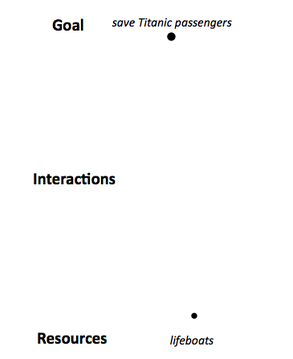
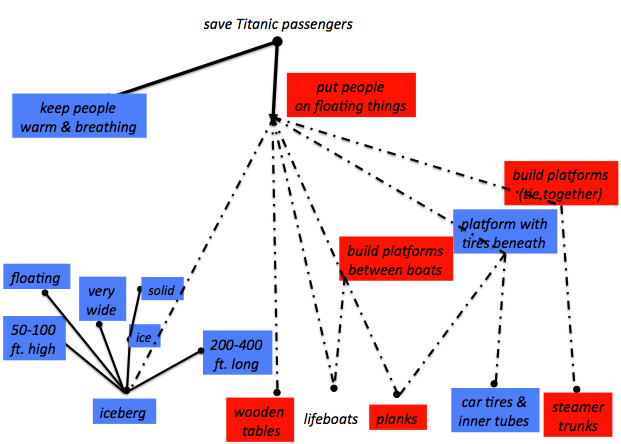
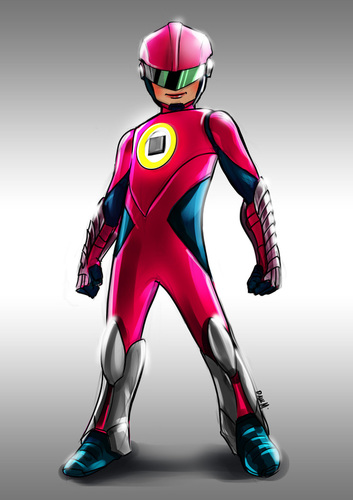
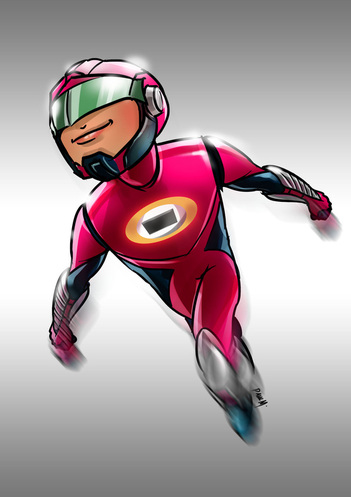
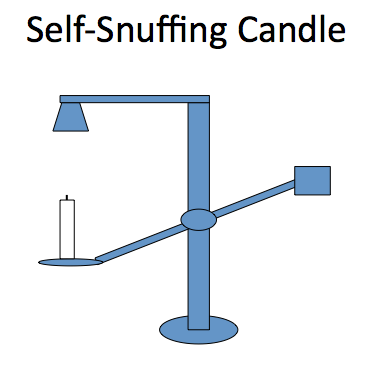
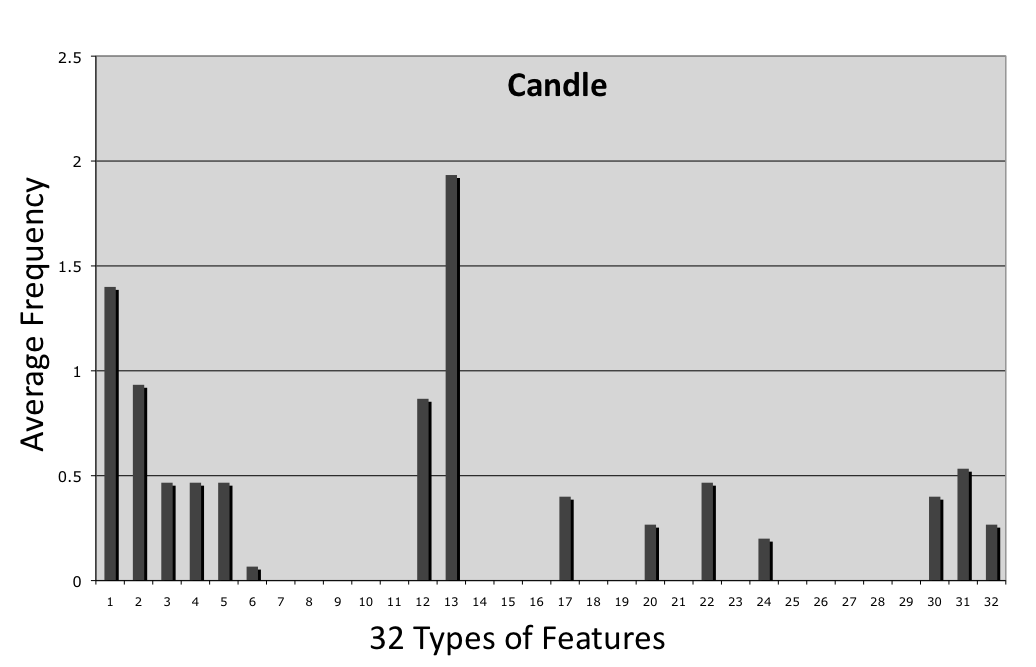
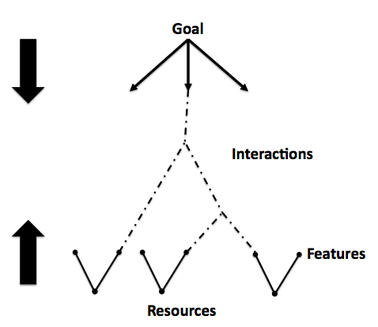
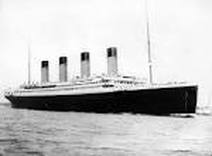
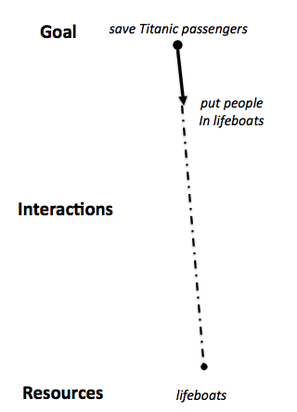
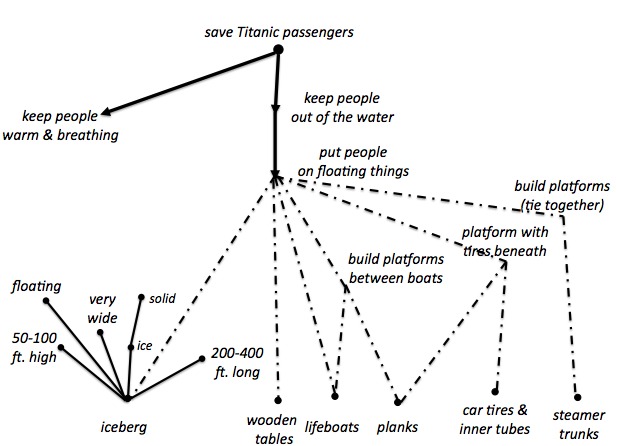
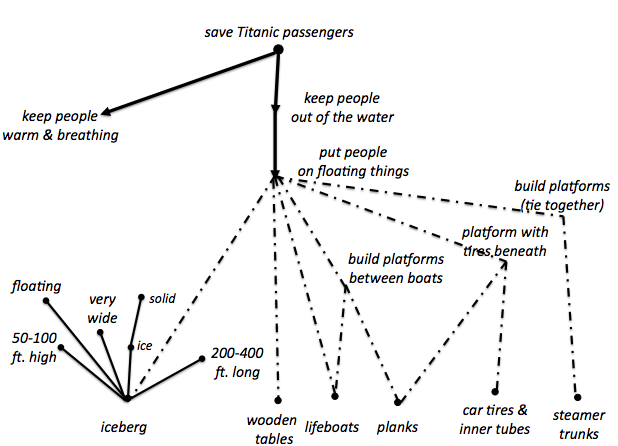
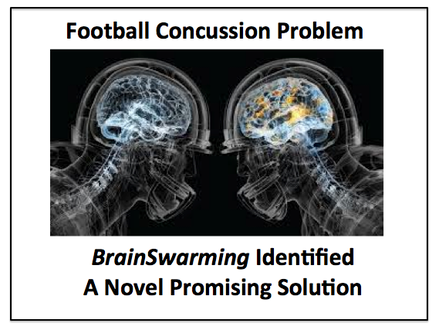
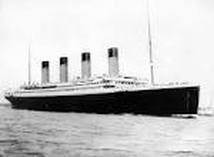
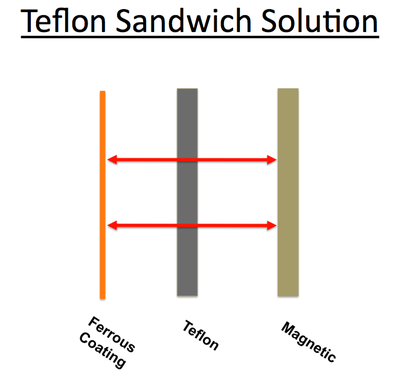
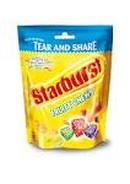

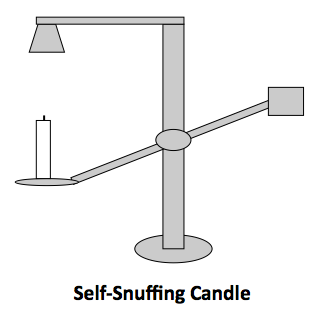
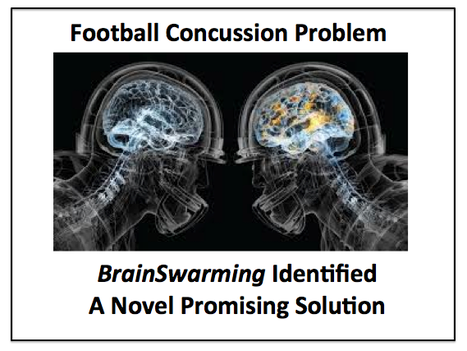
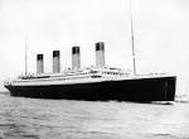
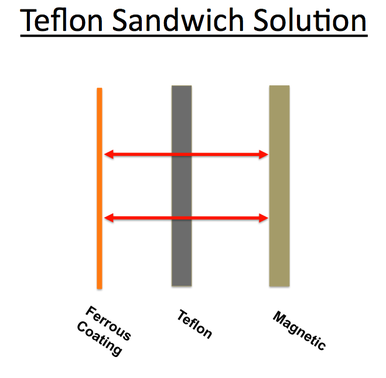
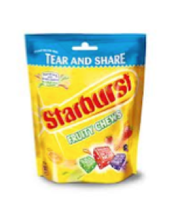

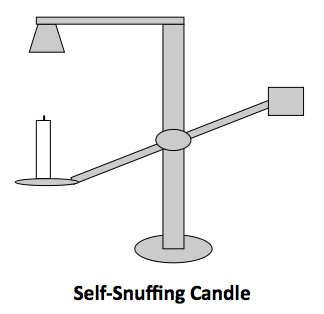
 RSS Feed
RSS Feed
